This week I braved the record pollen count to enjoy the spring flowers at one of my favorite places, The Atlanta Botanical Garden. Daffodils and tulips popped up early this year, as did dogwoods, azaleas, hyacinths, hellebores, redbuds and some viburnum blossoms, among others. This made for a visit that was well worth my wheezes on a glorious 80-degree day. If you're ever in our fair city, I recommend a visit. If not, here's a virtual one.
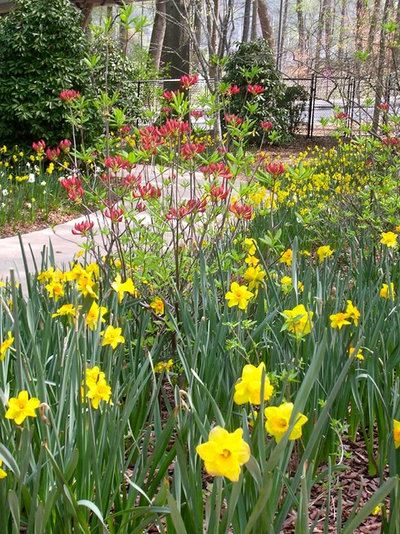
Spring sprang early this year; here in Atlanta we're about three weeks ahead of normal bloom time. While the Dogwood Festival probably won't have any dogwood blooms to celebrate, it's a real treat to enjoy them now before it gets humid.
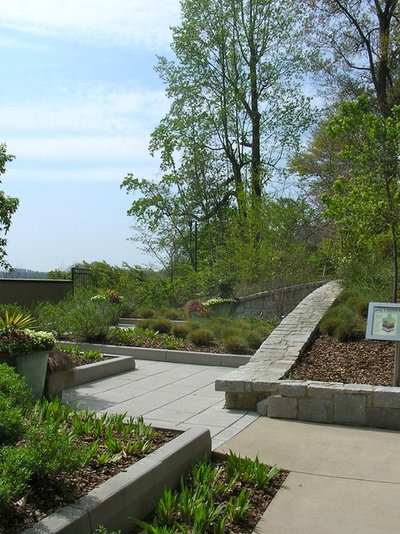
The gardens are much more extensive than when I moved here 10 years ago. During the expansion, the designers needed to make up for impermeable surfaces from the new construction. Thus there are lots of clever moves all around, from a permeable grass road that's wide enough for emergency vehicles to this green roof atop the gift shop.
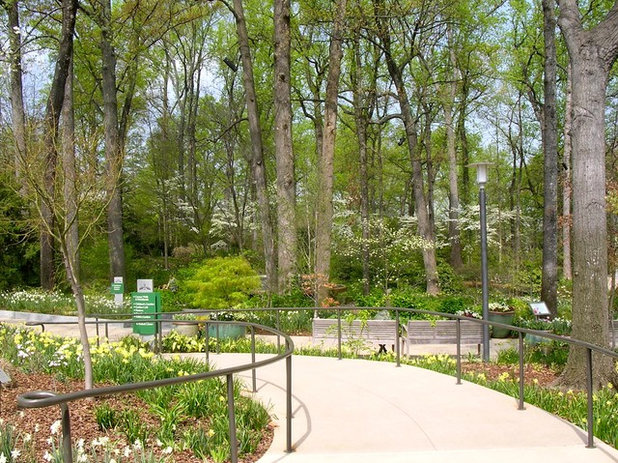
Upon entering the gardens, one is greeted with this view. Right now the ornamental understory is in its full glory, with the dogwoods at their peak and a carpet of daffodils, tulips and azaleas beneath.
I always opt to head to the right and hit the new canopy walk.
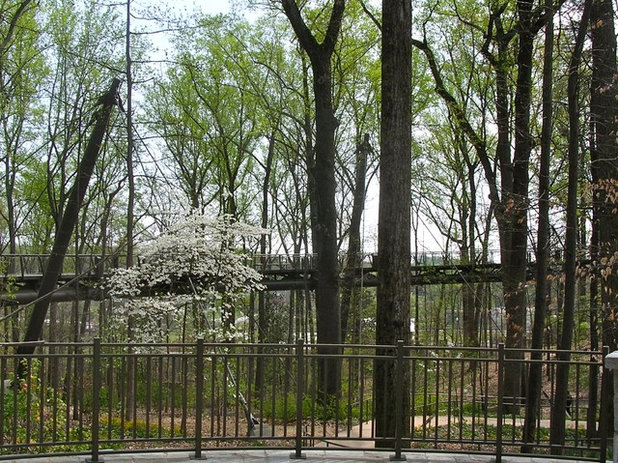
The new canopy walk is breathtaking. Suspended through some kind of awesome engineering I'll never understand, it takes visitors right into the canopy of Storza Woods. As you walk it, you are up in the trees and close to the base of their canopies.
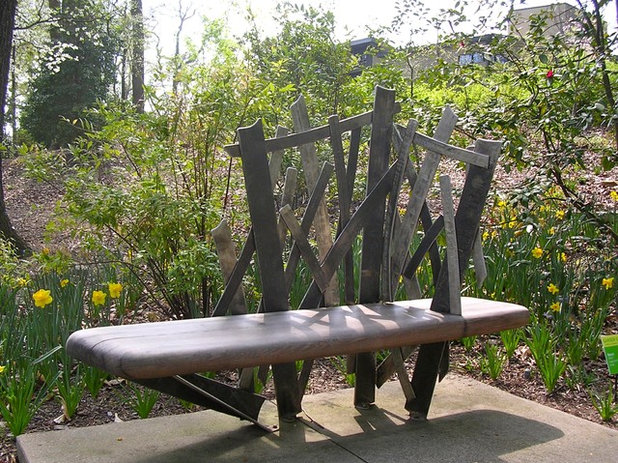
The furniture in the garden is artful and provides a place to pause and enjoy the surroundings. At this time of year, you may have a coat of yellow dust on your bum when you get up.
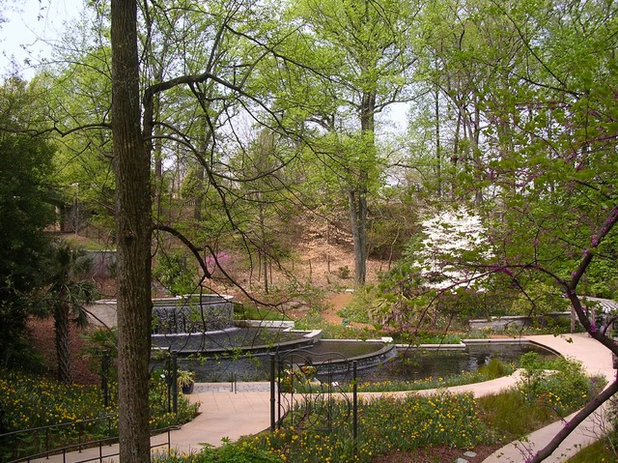
After finishing the canopy walk, we arrive at the Cascades Garden. The old entrance road used to curve up this spot, right up the terraces of the fountain. You'd never know it today.
Zoom in on that gorgeous mature dogwood
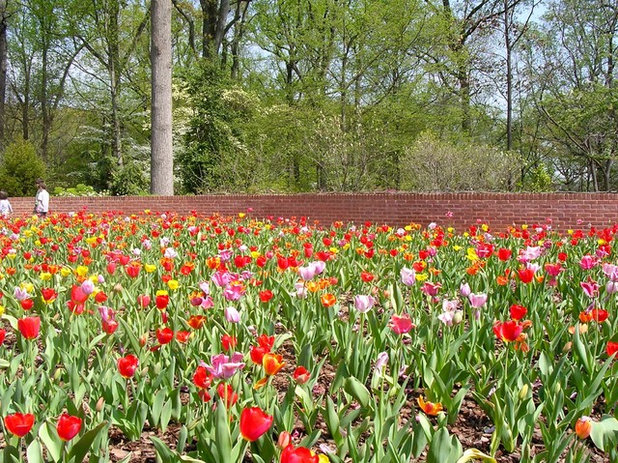
After you ascend out of the woodland gardens, an exuberant field of tulips welcomes you to the campus, which includes a snack bar with dee-lish treats plus a library and classrooms.
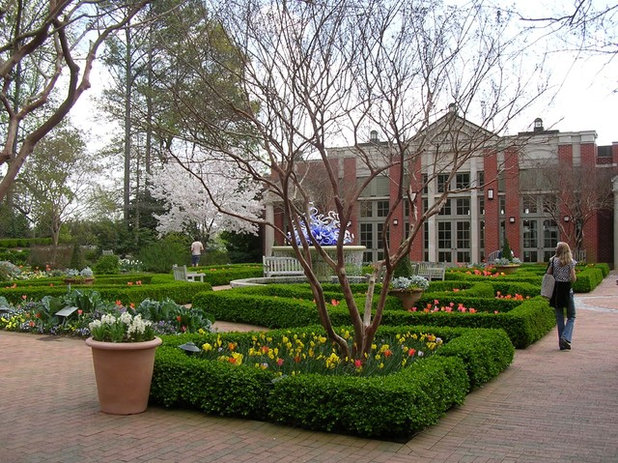
After stopping off for a fresh turkey and havarti sandwich at the snack bar, you come out to this parterre, where boxwoods ring crepe myrtles that spring out of beds of tulips. The natural forms of crepe myrtles are so beautiful; I'll never understand why people give them those bizarre and severe pruning jobs. Their beautiful bark and sculptural silhouettes provide interest all year long, even without flowers or leaves.
The blue glass sculpture in the background is by Dale Chihuly.
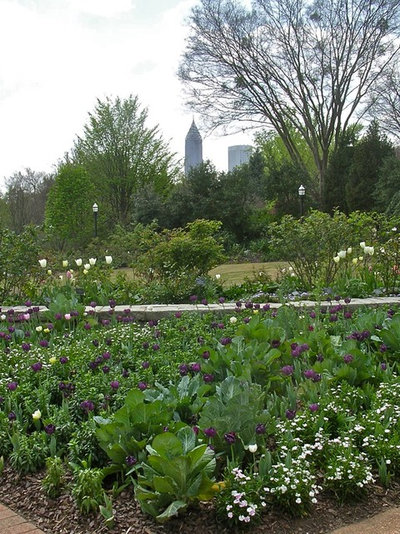
The skyscrapers of midtown Altanta pop up beyond the tulip border garden. The color palette of green, deep purple and white is so beautiful; borrow this idea for your garden or a room in your home.

A spectacular
alleé of crepe myrtles surrounds a path between the great lawn and the campus buildings.
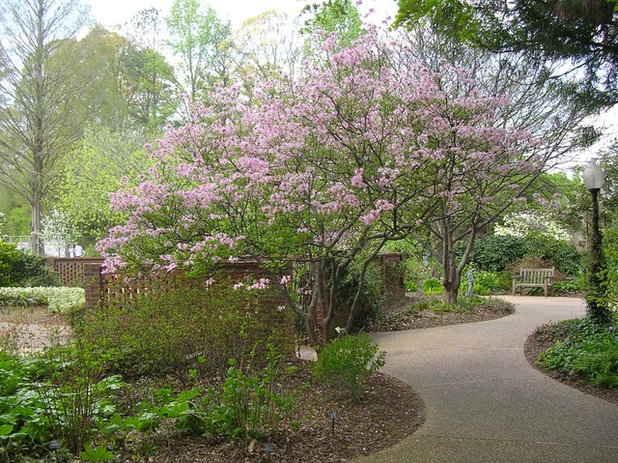
Smaller garden rooms are part of the original gardens, and sinuous paths lead you from one to the next. The pink flowering trees are Piedmont azaleas.
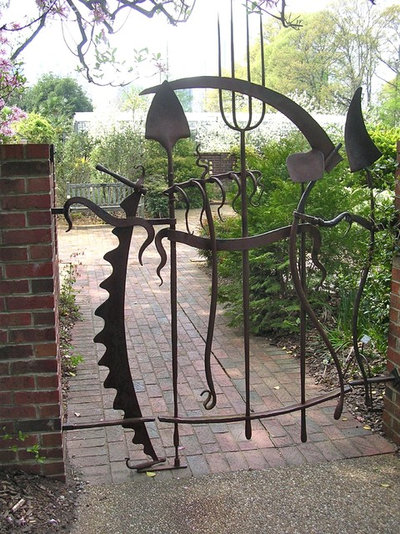
This whimsical garden gate is by Andrew T. Crawford. The gardens will feature more of Crawford's gates through April; he'll guide a tour of them on April 17, 2012. Make a reservation
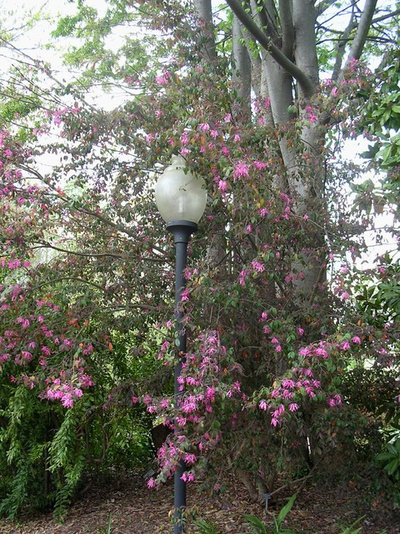
This interesting flowering tree is a Chinese fringe flower.
Get a closer look at the bloom
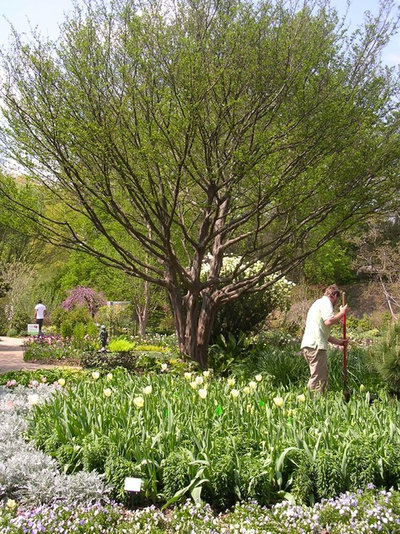
One thing I love about the garden is that when you're standing around wondering what some plant is and you can't find a sign, the friendly garden experts will let you know. This gardener identified this tree as a
Styrax Japonica, or Japanese snowbell tree.
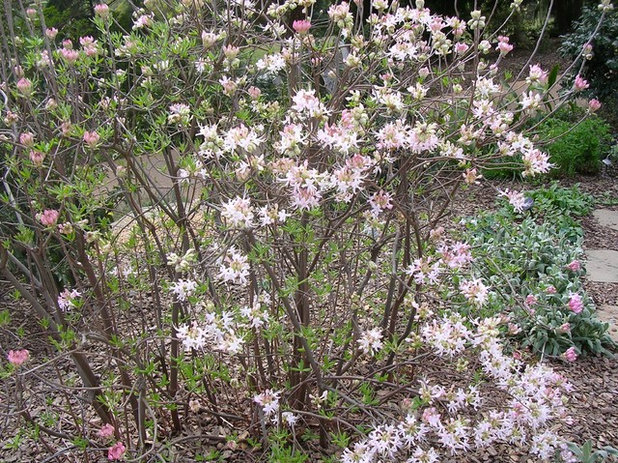
Until this visit, I was unfamiliar with the Piedmont azalea, which has a feathery flower and reminded me of witch hazel rendered in pink.
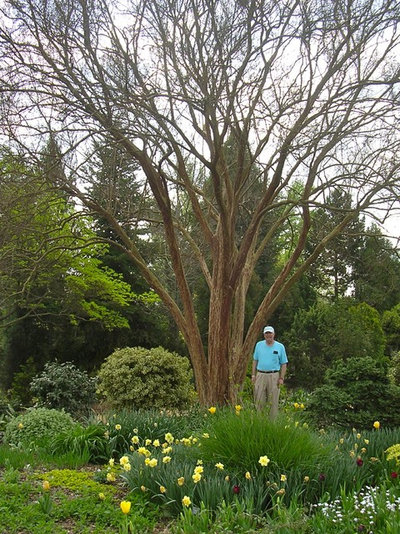
This is the biggest crepe myrtle I've ever seen. I asked this 6-foot-4-inch-tall man to act as a living-scale figure to show you just how big it is. He agreed to do it because he's my dad.
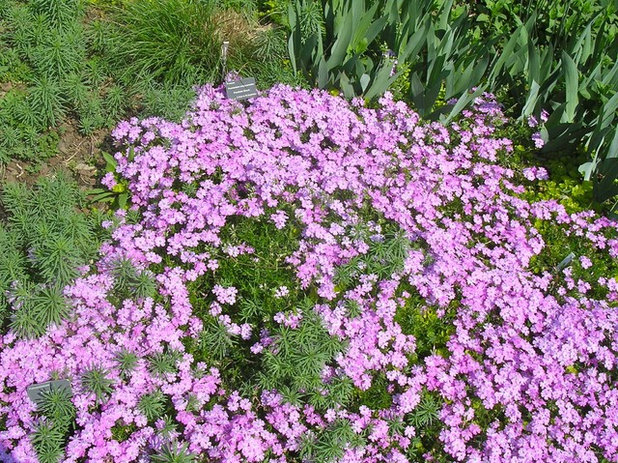
Creeping phlox creates a colorful ground cover.
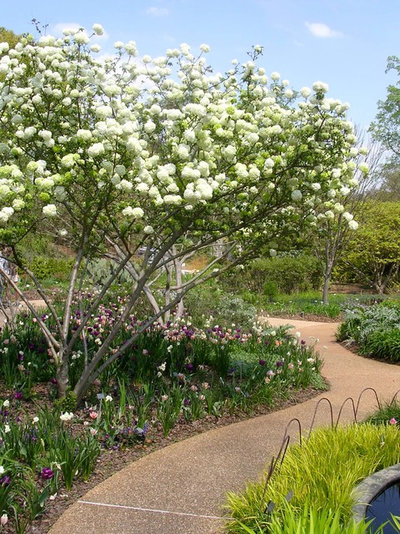
A Japanese snowball viburnum hit its peak this week.
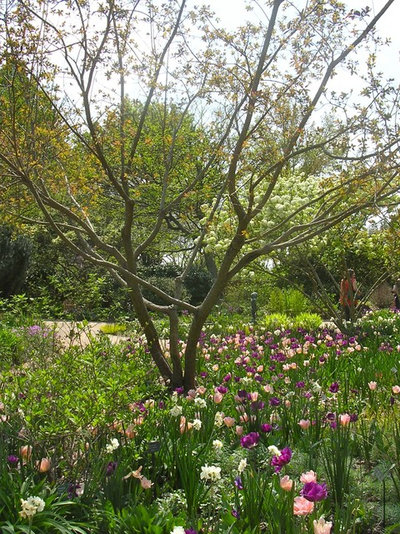
A smoke tree spreads its sculptural branches over a field of white, pale pink and purple tulips.
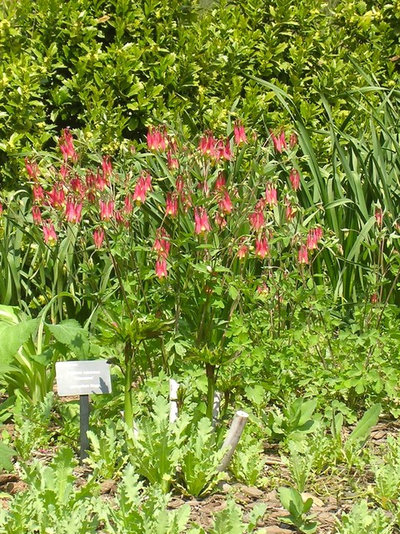
Canadian columbine in a fiery orange had popped up to say hello.
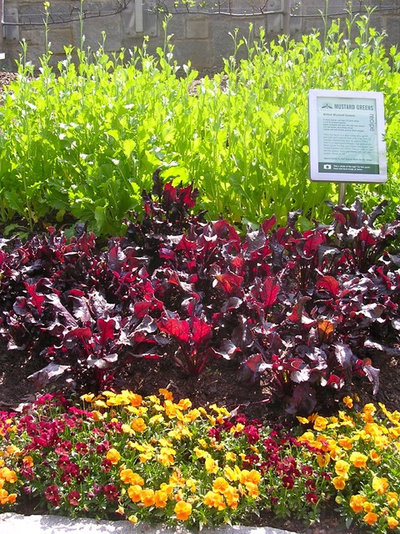
Vibrant mustard greens complement bull's blood beets in the relatively new edible gardens. Pansies add another wave of blooms below. The waves of contrasting stripes add a design element not often seen in edible gardens. Other neat things in the edible section are coordinating signs with recipes on them.
Oh, of course I got a close-up of the wilted mustard greens recipe for you; don't be silly!
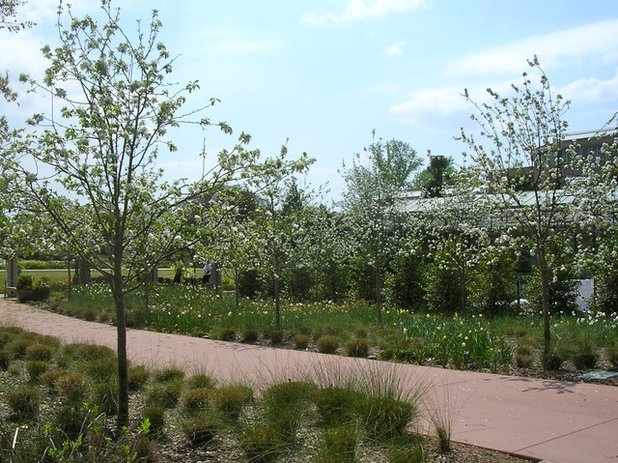
An ornamental orchard of Calloway crab apple trees provides a transitional space between the ornamental gardens and the edible gardens. They're just starting to leaf out.
Is anything blooming in your neck of the woods? Let us know where you are and what you're seeing in the Comments section below.
More:Garden Tour: Edith Wharton's The Mount
Spring Planting: Wonderful Wisteria
Landscape Tour: Two Acres of Rural Hillside in Maine





